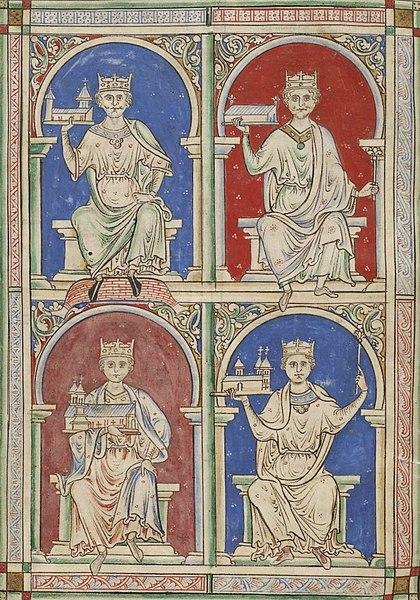The "Angevin Empire", 1150s - 1230s

This Special Subject investigates the constitution, development and eventual demise of the aggregate of lands brought together by King Henry II of England, son of the count of Anjou (hence the use of ‘Angevin’) and grandson of King Henry I. The starting point is 1154 when Henry, already count of Anjou and of Maine, duke of Normandy and by marriage duke of Aquitaine, became king of England and put an end to two decades of civil war. Until 1204 and the loss of Normandy and Anjou, the Angevin kings controlled over half the French kingdom. Old-fashioned maps used to show this cross-Channel ‘empire’ as one red entity, which is deeply misleading as there was no political or administrative unity.
The course finishes in the early 1230s, just after Henry’s grandson, Henry III, tried and failed to reconquer Poitou and the rest of the ‘empire with no name’, as John Gillingham called it.
Students encounter three of the most famous English kings: the authoritarian lawmaker Henry II and his sons, Richard, the knightly crusader, and John, the classic embodiment of bad kingship. Some received opinions about those kings will be challenged, particularly because, although they were English kings, they were possibly even more continental princes. Among their titles the English crown was by far the most prestigious, but in many ways the centre of gravity of their activities and of their identities was on the Continent.
The ‘Empire’ has often been seen as a political and dynastic experiment meant to fail; it certainly complicates any narratives of national construction both for England and France. The phrase ‘Angevin Empire’ itself has been discussed ever since Kate Norgate first used it in 1887; its problematic descriptive and analytical is a running theme through the course. Through a close reading of contemporary sources, students will pursue a fresh inquiry into intertwined questions of identity, political cultures and the complex interactions of the local and the imperial’.
Primary sources are the backbone of the classes. There is a striking imbalance in volume and diversity between the sources produced in England and their continental counterparts; the discrepancy deepened over the period. However, students with continental sources – chronicles, poems and charters – which provide a crucial counterpoint. Many of these sources are translated in English for the first time.
Image: The Kings of England. Matthew Paris, Historia Anglorum, 1250s.
